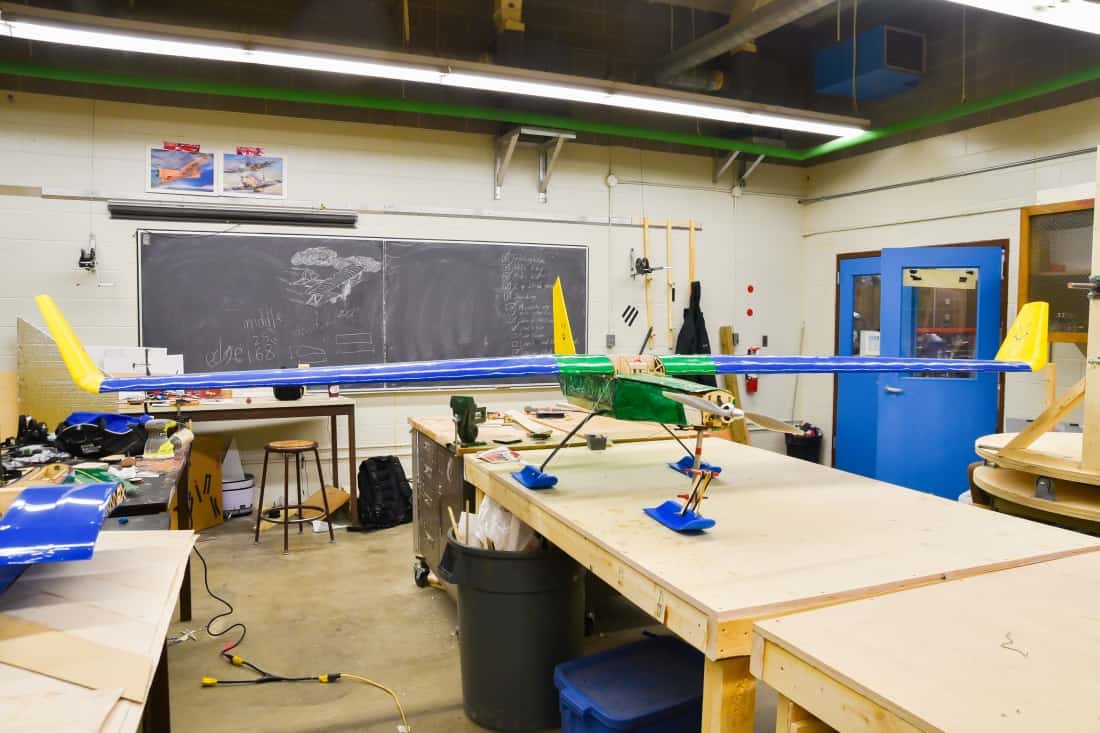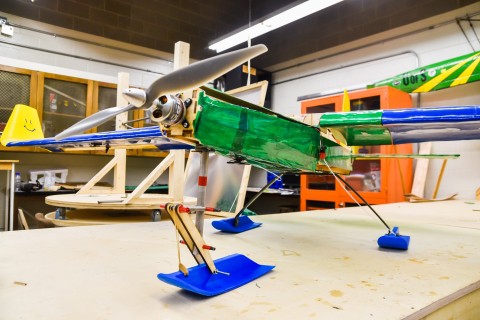
The Lion of the North will take flight at the SAE Aero Design East competition.
After months preparing their model airplane, the University of Saskatchewan Aero Design Team is ready to compete against teams from across the world as part of an annual competition from March 9 to 11 in Lakeland, Florida.
The competition is hosted by the Society of Automotive Engineers, now named SAE International, a global professional engineering standards association based in the United States. The U of S students will be competing in SAE Aero Design East, where they will face aero design teams from postsecondary institutions all over the world with their plane, the Lion of the North.
Scott Barrie, a fifth-year mechanical engineering student and one of two technical directors on the U of S Aero Design Team, explains that the competition is points-based. Each team’s plane must attempt to carry the maximum weight of tennis balls and payload weights, which are used in lieu of passengers and luggage, respectively, and transport it to prove that the plane’s design can hold the weight as it flies laps.
“We give a presentation on our plane, then we go out to a big field with all the other teams, about 35 or 36,” Barrie said. “We do a lap, and if we successfully land after that, we get points depending on how many passengers we lifted and how much cargo we lifted. And then, we do that four to five times.”
The U of S team is registered for the regular category of the competition, which is an all-electric engine class for students from all levels of design experience who are tasked with challenges that imitate those that engineers face when designing aircrafts. Every year, the team builds a model airplane that must follow the diameter requirements given by SAE International in the competition guidelines.
Their competition model is made of various woods such as balsa, sitka spruce and birch, and by using a 3D printer, they have constructed winglets, which help to increase lift during the short takeoff.
For the regular category, all teams are limited to a maximum wingspan of 144 inches, a takeoff-distance limit of 200 feet and a commercially available battery to power the model. Barrie discusses how each aero design team is ranked by the evaluators at the competition.
“[The evaluators] do a weighted average between your flight-ground scores, your report mark and your presentation mark to come up with the ranking placement for all the teams,” Barrie said.
Five years ago, Barrie and a few other students founded the club because of a shared interest in aero design. Barrie notes that, when they began, he was not familiar with designing, but because of the student group, he and other members have become familiar with flight principles and how to construct a model.
Over the past year, the U of S students have been working on their competition model, and even though the design team focuses on technical projects, they encourage students from any discipline to join the group. The club meets every Wednesday at 6 p.m. in the Hardy Lab in the Engineering Building.
Kaitlyn Baron is a secondyear mechanical engineering student and holds the positions of both secretary and head of research and development of the U of S Aero Design Team. Baron explains that she got involved with the club at an information session in 2017 and that, even though she did not understand the technical information involved in building an aircraft, she was still eager to join the group.
“I went to that first meeting and was in a huge lecture hall,” Baron said. “We listened to one of the other founding member’s theory of flight presentation and that was a huge ‘info-dump’ of everything you could ever want to know about flight, airplanes [and] how to build one, and I loved it.”
—
Sam Campling
Photo: David Hartman